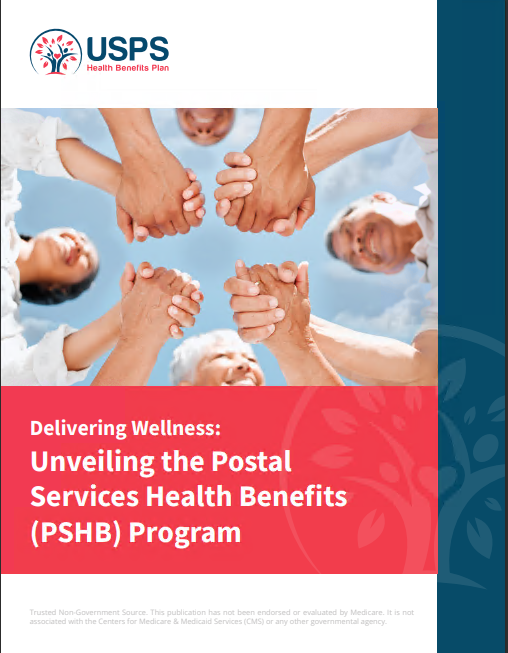Key Takeaways
-
The premiums you expect to pay under the Postal Service Health Benefits (PSHB) Program in retirement may look very different from what they are today, due to variables like age rating, Medicare coordination, and shifting government contributions.
-
Planning early, reviewing plan details annually, and understanding how PSHB premiums work post-retirement can save you from making costly assumptions that may impact your future financial security.
The False Sense of Premium Predictability
Many Postal Service employees assume their PSHB premiums will remain steady or increase predictably based on general inflation trends. However, this belief doesn’t align with how the system actually works once you retire. The truth is, several moving pieces can cause your premiums to shift unexpectedly, and these changes can hit hardest during retirement—precisely when your budget is most vulnerable.
How Premiums Are Determined Under PSHB
Your PSHB premiums are not fixed for life. Instead, they are influenced by:
-
Your plan choice and coverage type (Self Only, Self Plus One, or Self and Family)
-
Your age (especially if enrolled in an age-rated plan)
-
Whether you coordinate coverage with Medicare Part B
-
The level of cost-sharing negotiated annually between the government and plan providers
The government currently pays about 70% of the total premium cost, but this percentage could change in the future depending on budget decisions and legislative developments.
Retirement Shifts the Cost Burden
Once you retire, your employer no longer contributes the same way it did when you were working. Instead, OPM becomes the administering agency, and you take on a more prominent share of the total premium.
For 2025, for example:
-
The annuitant share of monthly premiums for Self Only coverage starts at just over $240, but can go higher depending on plan type.
-
For Self Plus One or Self and Family, monthly costs can easily exceed $500, even before you factor in out-of-pocket costs like copayments and coinsurance.
These amounts are subject to annual increases, and retirees often experience steeper premium hikes than active employees.
Medicare Integration Isn’t Automatic—or Free
If you’re Medicare-eligible at 65, you may think enrolling in Medicare will automatically reduce your PSHB premiums. That’s not always the case. Some plans do reduce premiums or out-of-pocket costs for enrollees who have both PSHB and Medicare Part B, but others offer minimal financial relief.
You must:
-
Be enrolled in Medicare Part B
-
Select a PSHB plan that specifically offers enhanced benefits for Medicare participants
Keep in mind that Medicare Part B itself has a monthly premium. In 2025, the standard premium is $185 per month. Add this to your PSHB premium, and your healthcare costs can climb fast unless you’ve planned wisely.
Your Age Affects the Premium More Than You Think
Under PSHB, some plans use age-based premium pricing. That means the older you are when you retire, the more you may pay. While this wasn’t the case for all plans under FEHB, it is more prominent under PSHB due to structural changes made for 2025 and beyond.
Even if your plan seems affordable at age 60, it could become significantly more expensive by age 70 or later. Annual adjustments for age, coupled with plan-wide premium hikes, can create a dual escalation that surprises many retirees.
Premiums Increase Even Without Major Health Events
One of the biggest myths about PSHB coverage is that if you stay healthy, your premiums should remain low. But PSHB premiums are not based on individual health history; they are set based on broader risk pools, administrative costs, and government funding levels.
This means you could face a premium increase even if you don’t visit the doctor all year. The factors driving these increases include:
-
Rising prescription drug costs
-
Expanding use of specialty care
-
Higher utilization among the retiree population
Expect annual premium adjustments every January, regardless of your personal healthcare usage.
Premium Predictability Ends After Open Season
During Open Season (held each November–December), you get a brief window to compare plans and premium changes. But after that period ends, your choice is locked in unless you experience a qualifying life event.
This structure means you must anticipate changes before they happen, not after. If you don’t actively review changes in premiums, deductibles, or coverage benefits, you could get stuck with a costlier plan than intended.
Government Contributions Are Not Guaranteed Forever
Currently, the federal government covers approximately 70% of PSHB premiums. However, proposals have surfaced in recent years to shift from a percentage-based contribution to a fixed-dollar voucher system.
If implemented, such a change would:
-
Remove the automatic inflation adjustment in government contributions
-
Increase the proportion you pay over time
This would disproportionately affect retirees who rely on fixed incomes and have fewer opportunities to offset rising healthcare expenses.
Planning for Premiums in Your Retirement Budget
You shouldn’t assume your current paycheck deductions will match your retirement costs. Budgeting for future premiums requires:
-
Including Medicare Part B premiums
-
Reviewing plan brochures during every Open Season
-
Factoring in deductibles, coinsurance, and copayments
It’s not just the premium you need to plan for—it’s the total healthcare burden.
Don’t Overlook the Role of Geographic Cost Variation
Your ZIP code matters. PSHB plans often have regional networks and cost-sharing arrangements. If you move after retirement—even just across state lines—you may have to switch plans entirely. Premiums and available benefits could be very different.
In rural areas, there may be fewer participating providers, which can lead to:
-
Higher coinsurance for out-of-network care
-
Longer wait times for specialist visits
This shift in provider availability may not directly affect your premium, but it can increase your overall out-of-pocket costs.
Why Younger Employees Should Pay Attention Now
If you’re still years away from retirement, it’s tempting to tune out details about premium costs. But understanding these variables now can help you:
-
Choose a plan that will age well with you
-
Avoid plans that may become unaffordable later
-
Adjust your Thrift Savings Plan contributions or HSA strategy to support future premium payments
Think of it as proactive financial health. The earlier you prepare, the less vulnerable you’ll be to unexpected increases.
PSHB Premium Trends Over Time
Looking back, health premiums under FEHB have increased by an average of 5–7% annually. In 2025, the shift to PSHB has brought about more plan-specific cost structures and a sharper focus on Medicare integration.
This transition has led to:
-
More variance between plan costs
-
Higher premiums for plans with broad provider networks
-
Lower out-of-pocket ceilings on some Medicare-enhanced plans—but only if you enroll in both PSHB and Medicare Part B
Historical trends show that costs rarely go down. Any assumption that your premiums will stay flat is not supported by actual data.
Make Annual Review a Habit
To protect your budget, make it a point to:
-
Review the PSHB plan brochures every year
-
Compare premiums and benefits carefully
-
Reassess your needs, especially if your health or location changes
This is not a one-time decision. It’s an evolving choice that can dramatically impact your financial security in retirement.
The Bigger Picture: It’s Not Just About Premiums
Premiums are only part of the cost equation. When you look at your plan each year, also consider:
-
Annual deductibles
-
Copayments and coinsurance
-
Out-of-pocket maximums
-
Prescription drug tiers
A lower premium plan may actually cost you more if it comes with higher usage-based charges.
Getting Strategic About PSHB Costs
Making smart choices starts with awareness. Don’t wait until the month you retire to understand your PSHB plan. Start now. Look at how plan structures differ. Compare age-rated vs. community-rated plans. Understand what Medicare will (and won’t) help with.
And most importantly, get advice from someone who can explain how these pieces fit together for your situation.
Understanding Your Costs Now Avoids Shock Later
By the time you retire, the PSHB landscape may have shifted again. Legislative changes, economic pressures, or Medicare updates could all impact the premiums and benefits available to you. What feels affordable now may not hold up ten years from now.
Don’t let today’s assumptions become tomorrow’s regrets. Connect with a licensed agent listed on this website to walk through your options, clarify your plan’s structure, and make sure your future self is protected.











